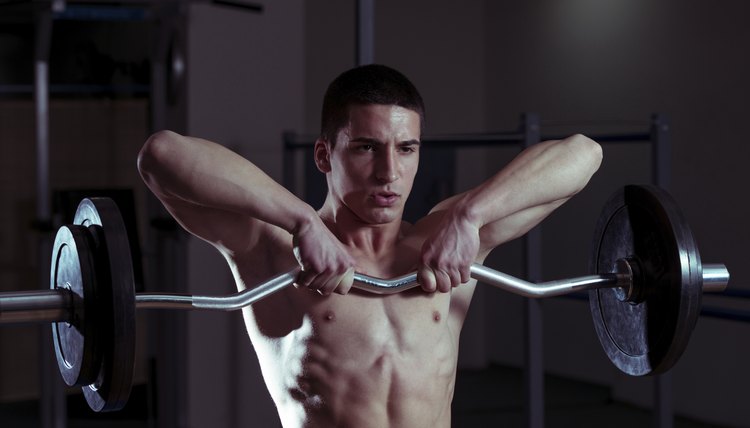What Muscles Should a Running Back Focus on Training

Organized football is an intense, physically grueling game that will test your body's endurance and overall strength. Every position requires a different set of muscle groups to be strong and flexible. As a running back, your position is as physically demanding as any on the field, as you not only have to power your way through tacklers, but you also have to be able to withstand dozens of violent blows throughout a game.
Quadriceps
Quadriceps are the primary push muscles on your legs. Quads are especially important if you are a power-style running back, where your role is to either block on most downs or plow into the line and push your way forward for a few yards. Quads, working in tandem with your hamstrings, as the antagonist muscle, and calves, can also help maintain your balance when you attempt to change direction quickly.
Shoulders
Above all else, you must be able to absorb blows by lowering your shoulders but keeping your head up. Shoulder pads assist in shock absorption, but a running back with a thin frame and small shoulder muscles will break down considerably faster than a bulkier player. Shoulders can also be among the most stubborn muscles to build through weight training, as their wide range of motion creates multiple muscle sections to exercise.
Core
All athletic power flows through the core, which chains up the upper and lower body. Strengthening your lower back and ab muscles and your pelvic floor will give you the power to stand your ground.
Triceps and Biceps
Triceps, located on the opposite side of your arm from the biceps, function as the primary push muscle on your arms. These muscles are used during any motion that involves pushing a defender off of you, be it from the front, side or rear. In many instances you may need to use your triceps to maintain your balance by bracing yourself against a teammate, or fallen player at your side.When you keep a tight cinch on the ball while you run through the line, avoiding swatting arms and people attempting to rip the ball away, the primary muscles you use are your biceps. If you can't hold onto the ball, your effectiveness takes a nosedive, as does your team's chance at winning.
Calves
Of all the leg muscles you use, the calves may be the most important. Balance, lateral or north-to-south explosiveness and lower leg stability are all used on every play, regardless of your role in that respective play. Similar to shoulders, calves can take an extensive amount of exercise to build through weight training.
References
Writer Bio
Nicholas Bragg, a lifelong athlete and certified personal trainer, attended four separate colleges from Maryland to California, finishing in 2004. Named to the CEO's club as an elite performer at Intuit in 2009, he changed careers in 2010 and now contributes writing to Mahalo and SportswithM.
